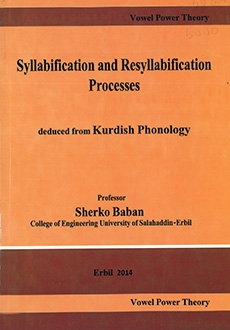| Éditeur : Vowel Power Theory | Date & Lieu : 2014-01-01, Erbil |
| Préface : | Pages : 158 |
| Traduction : | ISBN : 640/2014 |
| Langue : Anglais | Format : 160x235 mm |
| Code FIKP : Liv. Eng. Bab. Syl. N° 5183 | Thème : Linguistique |
|
Présentation
|
Table des Matières | Introduction | Identité | ||
 Syllabification Processes deduced from Kurdish Phonology | |||||
| Table des Matières | ||||
| ||||